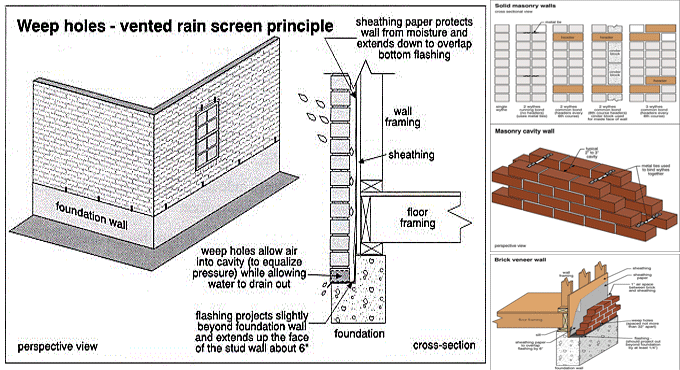
Details about brick veneer and solid masonry
There are two types of brick houses like brick veneer and solid masonry.
Solid masonry construction is known as ?Solid Brick?, ?Double Brick?, and sometimes ?Brick and Block?. Normally, a solid masonry wall comprises of an exterior layer of brick as well as an inner layer of brick (a layer of brick is defined as a ?wythe? in masonry circles).
Solid masonry is more stable as compared to solid brick or double brick since the inside wythe may not be brick. As the inside wythe will always be unseen, the concrete or cinder block is sometimes replaced for brick.
As the height of the brick wall is raised, there is possibility for inner wythe to be detached from the exterior wythe. To retain the two wythes jointly, header bricks are generally arranged every six rows. From the outside, header bricks appear as regular bricks except they are shorter.
Practically, they contain the similar size as a normal brick. They are positioned sideways in order that the end of the brick is evident from the outside of the building.
The purpose of the header bricks is to create a platform among the exterior wythe and the inner wythe so that they can?t detach from each other.
So, most solid masonry walls demonstrate header bricks in each 6th row or course. Sometimes, each brick in the course belongs to a header brick, however there exist several common patterns.
Sometimes bricks are arranged over windows with their long face equal with the wall but the brick sustains on its end. These are known as soldiers.
A solid masonry wall can be constructed with metal ties to retain the two wythes of masonry jointly. Once it is accomplished, no header bricks are seen and the wall can easily be misunderstood for a brick veneer wall.
Structurally, solid masonry walls are very stable and with proper maintenance they can last for a long time.
The major variation is that with solid masonry, the brick is detaining the house. With brick veneer, the house is detaining the brick.
However, the wall is only one wythe thick. Behind the brick veneer, there exist a wood frame wall that is actually sustaining the house. The brick veneer is, in effect, siding.
To get more detail, go through the following link carsondunlop.com


